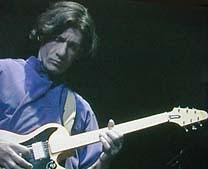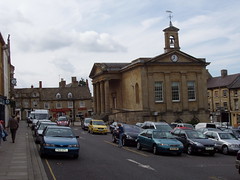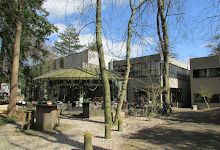Archive number: 40
Title: Harem Scarem
Main Album: Hamburger Concerto. Also a single with Early Birth 1974.
Track number: 2
Genre: Jazz Rock Instrumental
Studio: Olympic Studios 'B', 117 Church Road, Barnes, London SW13 9HL
Length: 5' 50”
Composer: Anonymous
Musicians: Jan Akkerman – Electric Guitars (Fenders) and Talkbox?, Timpani; Thijs van Leer – Hammond organ, Grand piano, Voice, Flute, Accordion, Mellotron; Bert Ruiter - Bass; Colin Allen – Drums, Chinese Gong
Producer: Mike Vernon
Engineer: Bob Hall with David Hamilton-Smith and Rod Thear
Label: Polydor, Atco, EMI, Red Bullet, JVC, JVC Victor
Date of recording/release: January/March 1974; April 1974. CD – 1998, 2001, 2001, 2002, 2006
Notes: Van Leer says he wrote this one in a pub in Belgium about drinking and there is something quite rowdy about it, especially the way its beginning cuts in after the previous track. Harem Scarem means reckless, rash or wild. The duplicative rhyme echoes Hocus Pocus and the hope was for similar single success. Piano, guitar, bass and drums begin in unison with a strong beat. The latter three then alternate with an incredible jazzy guitar riff (00:00-00:12). The organ joins in next and the double tracked guitars really begin to rattle (00:13-01:27). The beat varies a little and at 01:07 van Leer attempts to move things along with some heavily reverbed Yeah, yeah, yeahs (01:07-01:27). Then, with a slight slowing of pace at 01:33-01:38, some reverbed Aahs follow and some timpani (01:39-01:59). A beautiful bridge follows, led first by guitar (02:00-02:11) then an electronically treated flute and accordion (02:12-02:25) with a Parisienne feel. The opening sequence is more or less repeated (but without the yeah, yeah section) and we come (03:30) to the bridge again. This time (03:41-03:53) the accordion is more prominent and the flute smoother. Just as things are about to get going again things slow once more and a very attractive jazz guitar break with piano, bass and drums, explores the theme further (04:00-05:05). Then it is back to the original jam (05:06) for a roaring finale that goes out on a glorious ascending note from van Leer that mingles with the final crash of a gong. The instruments are all carefully mixed and there is perhaps more evidence of production on this track than any previous one.
Title: Harem Scarem
Main Album: Hamburger Concerto. Also a single with Early Birth 1974.
Track number: 2
Genre: Jazz Rock Instrumental
Studio: Olympic Studios 'B', 117 Church Road, Barnes, London SW13 9HL
Length: 5' 50”
Composer: Anonymous
Musicians: Jan Akkerman – Electric Guitars (Fenders) and Talkbox?, Timpani; Thijs van Leer – Hammond organ, Grand piano, Voice, Flute, Accordion, Mellotron; Bert Ruiter - Bass; Colin Allen – Drums, Chinese Gong
Producer: Mike Vernon
Engineer: Bob Hall with David Hamilton-Smith and Rod Thear
Label: Polydor, Atco, EMI, Red Bullet, JVC, JVC Victor
Date of recording/release: January/March 1974; April 1974. CD – 1998, 2001, 2001, 2002, 2006
Notes: Van Leer says he wrote this one in a pub in Belgium about drinking and there is something quite rowdy about it, especially the way its beginning cuts in after the previous track. Harem Scarem means reckless, rash or wild. The duplicative rhyme echoes Hocus Pocus and the hope was for similar single success. Piano, guitar, bass and drums begin in unison with a strong beat. The latter three then alternate with an incredible jazzy guitar riff (00:00-00:12). The organ joins in next and the double tracked guitars really begin to rattle (00:13-01:27). The beat varies a little and at 01:07 van Leer attempts to move things along with some heavily reverbed Yeah, yeah, yeahs (01:07-01:27). Then, with a slight slowing of pace at 01:33-01:38, some reverbed Aahs follow and some timpani (01:39-01:59). A beautiful bridge follows, led first by guitar (02:00-02:11) then an electronically treated flute and accordion (02:12-02:25) with a Parisienne feel. The opening sequence is more or less repeated (but without the yeah, yeah section) and we come (03:30) to the bridge again. This time (03:41-03:53) the accordion is more prominent and the flute smoother. Just as things are about to get going again things slow once more and a very attractive jazz guitar break with piano, bass and drums, explores the theme further (04:00-05:05). Then it is back to the original jam (05:06) for a roaring finale that goes out on a glorious ascending note from van Leer that mingles with the final crash of a gong. The instruments are all carefully mixed and there is perhaps more evidence of production on this track than any previous one.






 7. Jules Deelder
7. Jules Deelder



























